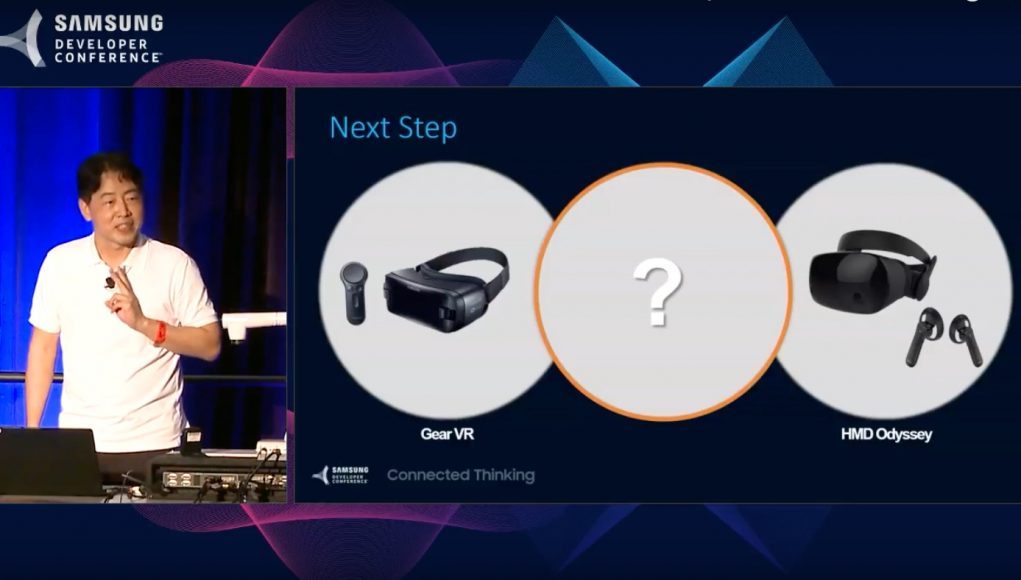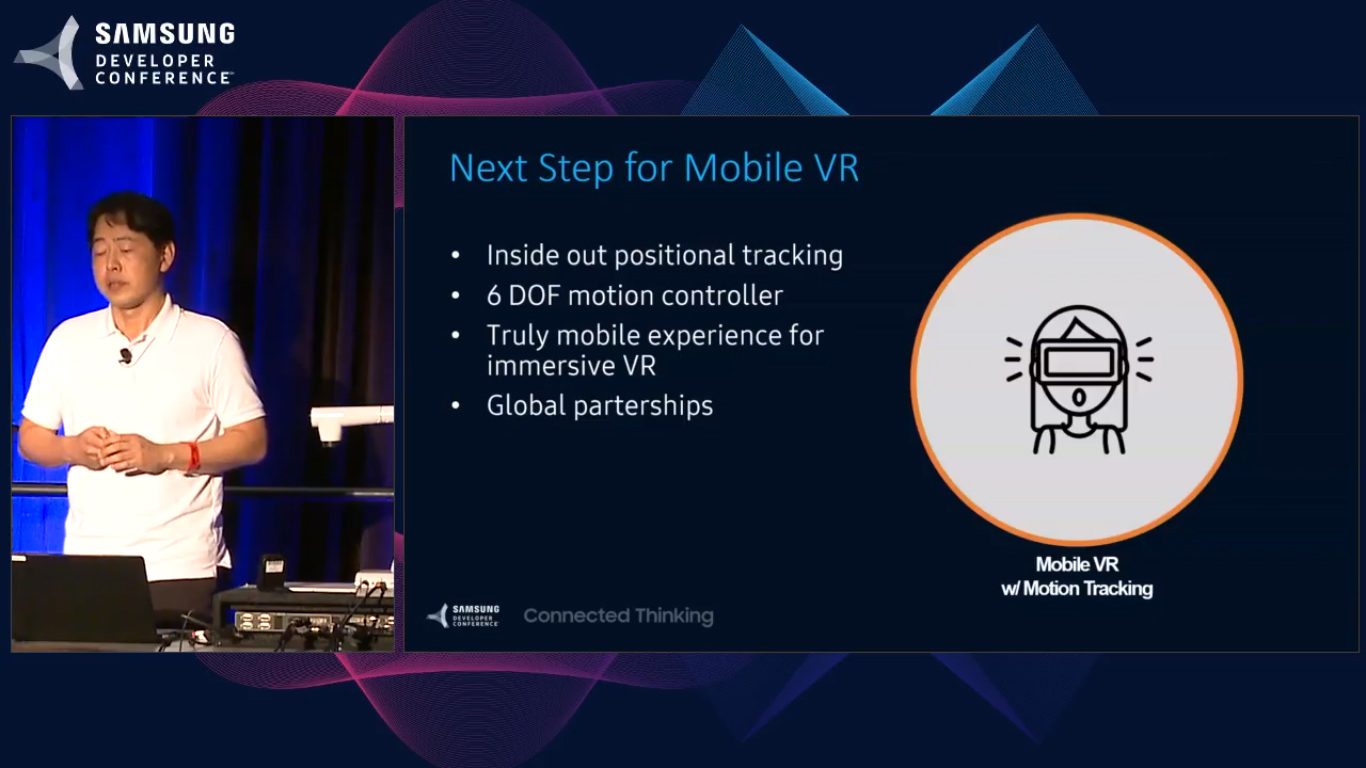Taeyong Kim, VP of Samsung Electronics and Head of Graphics R&D, took the stage last month at the company’s annual developer conference to talk a little bit about the future of VR for the company. While no big reveals were expected for the talk, Kim actually mentioned to the crowd that the company is actively working on a standalone VR headset with inside-out tracking and 6 DoF controllers as their ‘next mobile VR product’.
“The question is, how do we combine the benefits of [Gear VR and Odyssey] together for our next VR system?” said Kim. “That’s the question we’re asking at this point. So we think the next mobile VR system would have inside-out positional tracking along with 6 DoF motion controllers. Imagine what you can do with a system where you can track your motion […] along with your hands […] and also use it wherever you are with its full mobility.”
The full video can be found here.
Kim says the company is partnering with Intel to bring inside-out positional technology to a standalone VR headset. Intel has been working on its own standalone headset called Project Alloy until it was scrapped back in September, possibly making for a fortuitous turn of events for the tech to live on in the hands of the well-seasoned Korean manufacturer.
If Samsung pulls through with their own standalone VR headset with 6 DoF controllers, it would be in direct competition with Oculus’ upcoming Santa Cruz prototype, and to a lesser extent with the newly revealed Vive Focus. The future of Vive Focus is uncertain however, as HTC hasn’t said specifically if the headset is staying in China, or making its way to the West at some point. Either way, it won’t be running the Daydream app store and likely only have 3 DoF controllers despite its similar inside-out tracking capabilities.
As for the growing divide between Oculus and Samsung; with the advent of the $200 Oculus Go mobile VR headset announced back at Oculus Connect, it will certainly be interesting to see if app marketplaces diverge, as for now Gear VR (powered by Oculus) is still very much a Samsung product.
Kim says more details we arrive in the near future.
Thanks go to Kent Bye for pointing out the source of this information in his latest Voices of VR podcast that deals with Samsung’s VR strategy going forward.








